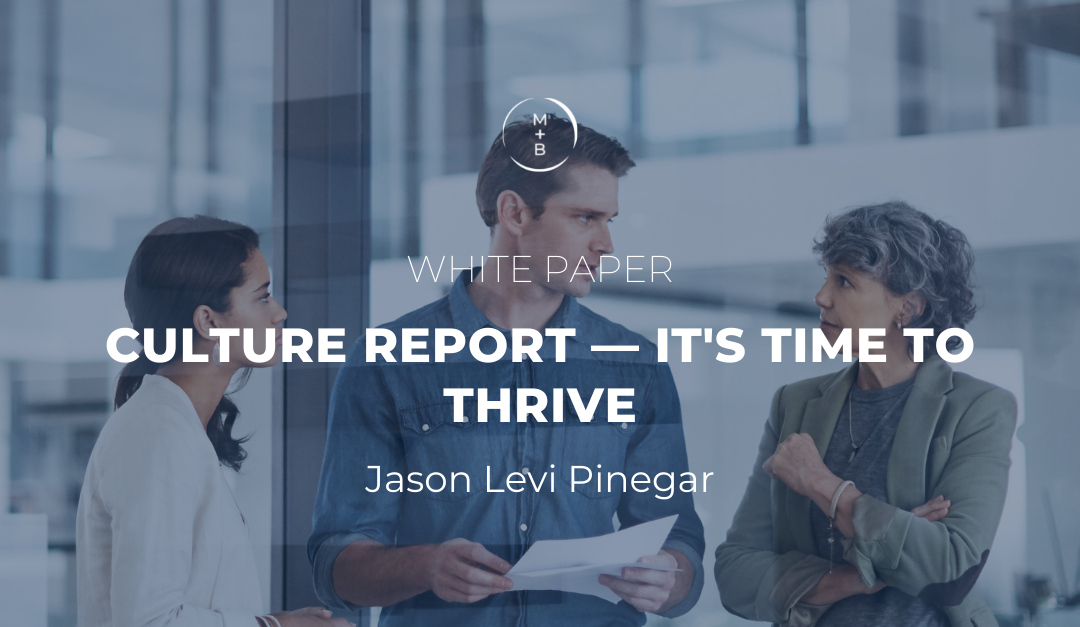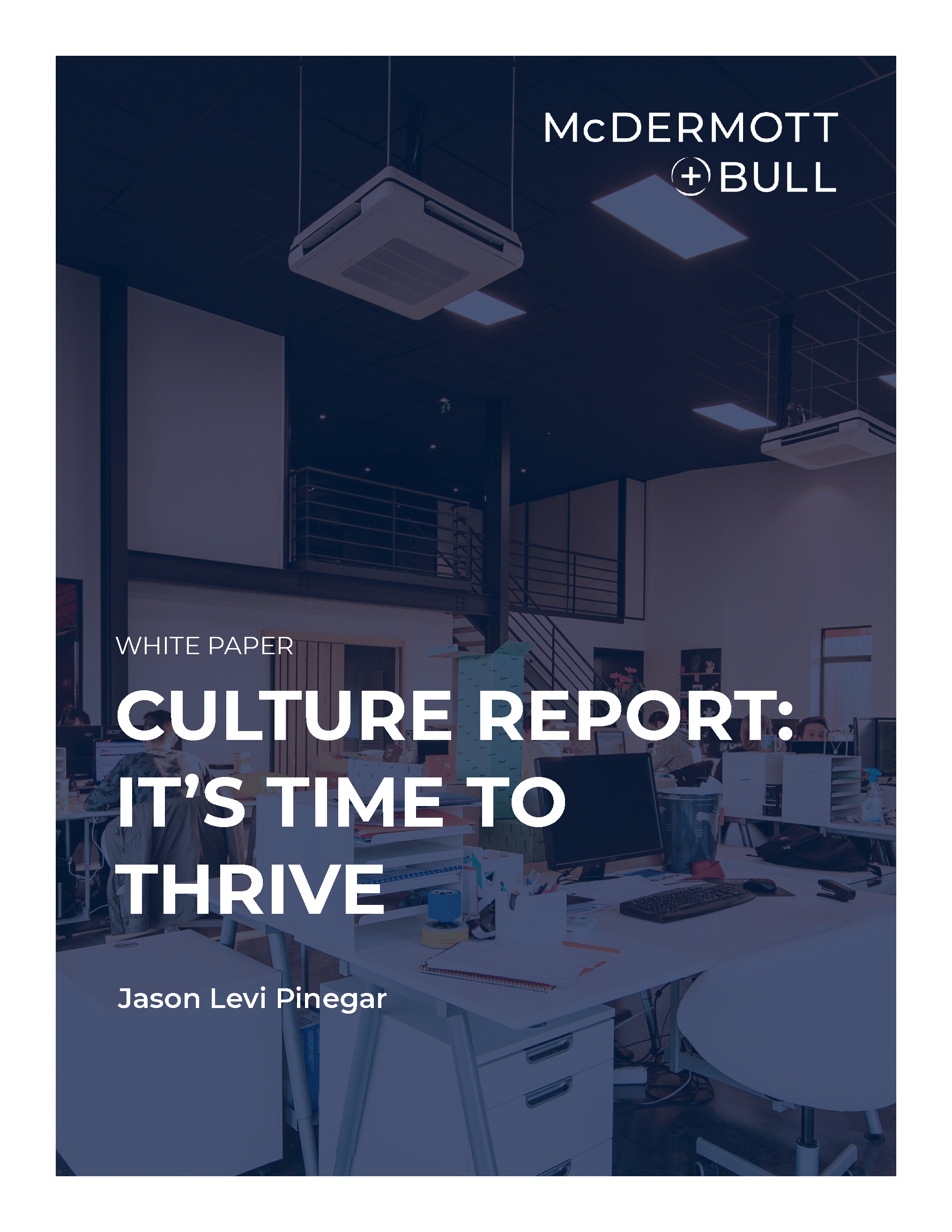FOSTERING RICH COMPANY CULTURES
The war for top talent is real. Maintaining relevance and growth will require today’s companies to successfully navigate an inherently complex and increasingly competitive marketplace. Each year ebbs and flows, bringing new waves of talent churn, and many leaders will come to realize the important role culture plays in their ability to attract and retain high-quality employees and leadership. Financial and productivity indicators will continue to be top of mind for executive leadership teams, but the top-performing companies will be those who place strategic emphasis on, and measure progress toward, fostering rich company cultures.
Culture eats strategy for breakfast.
– Peter Drucker
Company culture is comprised of1 “the pervasive values, beliefs, and attitudes that characterize a company and guide its practices.” Ultimately, company culture acts as a brand in the marketplace and should comprise the essence or heart of the company. More and more, employees and job seekers are looking for alignment2 of their own values, beliefs, and attitudes with those of the company, and there are three core areas or initiatives a company can focus on developing, and communicating about regularly, to boost their potential for greater success in the coming year: 1) Enriching and engaging people; 2) Investing in diversity and inclusion; and 3) Embracing social responsibility.
ENRICHING + ENGAGING PEOPLE
Confronted with a growing skills gap and the costly threat of talent attrition, more employers are investing heavily in training and development programs than ever before — and the benefits are very real. For example, one reputable study3 found that 84% of employees at top-performing companies received the training they needed, as opposed to only 16% at the worst-performing ones. It also showed that employees are 12 times more likely to consider leaving their current company when they feel they cannot achieve their career goals, and this number jumps to nearly 30 times more likely for new hires. People enjoy feeling engaged in their work, and when individuals and teams are trained appropriately, they are more likely to thrive in their environment, leading to increased productivity and substantial savings for the organization.
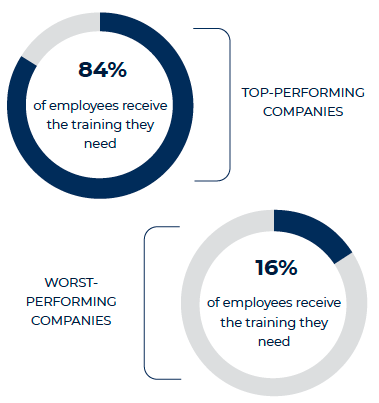
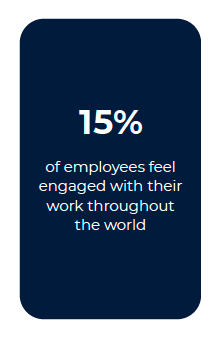
Sadly, many companies are struggling to successfully engage their workforce. A recent report on the state of the global workforce uncovered a significant problem4, with only 15% of employees reporting feeling engaged in their work. There is a very real need for all employees, regardless of their skill level, to feel engaged, enabled, and energized in their work. With this realization, executives are bringing in external consultants and hiring specialized leadership talent, who are skilled in learning and development, to build out and implement strategic initiatives to engage and enrich their people. This translates into an undeniable competitive edge5, with companies experiencing operating margins up to three times higher than their competitors, simply because they are choosing to emphasize people development.
INVESTING IN DIVERSITY + INCLUSION
Diversity, in both thought and background, is a key driver for improving problem-solving, innovation, and decision-making. A recent McKinsey study6 found a strong link between diversity and performance. According to their research, gender diverse companies are 15% more likely to outperform competitors, while ethnically diverse companies are 35% more likely to outperform competitors. They also found that in the U.S., for every 10% increase in racial and ethnic diversity on the senior executive team, earnings before interest and taxes (EBIT) rise nearly 1%.
With this profitability factor, it’s no surprise that leadership in approximately 35% of companies have substantially ramped up plans7 for investments in diversity initiatives over the past several years. While there is still significant work to be done, many of today’s top-performing companies are reaping the rewards, both socially and financially, by building and executing strategic sourcing plans that identify and attract diverse talent.
Ethnically diverse companies are 35% more likely to outperform their competitors.
%
EMBRACING SOCIAL RESPONSIBILITY
Corporate Social Responsibility (CSR) has become a topic of increasing importance as many employees and customers are looking for ways in which companies take care of the environment and give back to their communities. Millennials are particularly interested8 in philanthropic initiatives and, considering that they will comprise 75% of the workforce by 2025, it makes great sense for companies to make CSR a strategic focus. That said, millennials will also want to be sure that a company is being authentic9 in what it communicates about its CSR efforts – 76% will do the personal research to assess how an organization follows through on its words.
Several companies have begun releasing annual CSR reports, which outline specific and measurable ways they have been contributing to the community in a socially responsible way. Whether it be through a formal program, or simply encouraging and providing time for employees to engage in service opportunities of their own or those that are company sponsored, the benefits of a purposeful CSR effort are wide-ranging. One study even showed that encouraging CSR can
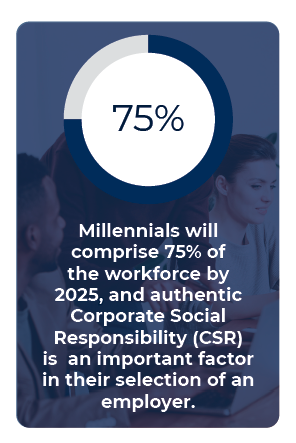
also increase an employee’s creative involvement, as they begin to find new ways of doing things around the office to cut waste and increase efficiencies. In the end, doing good feels good10 and it creates opportunities for collaboration and comradery outside of the normalcy of the day-to-day work in which employees are involved.
Jason Levi Pinegar
Partner
pinegar@mbexec.com
Jason Levi Pinegar is a Partner at McDermott + Bull, where he works closely with his clients, consulting across a variety of business sectors, to attract and secure game-changing leadership talent, while also ensuring close alignment with their unique mission, values, and culture. His earlier career focused in behavioral and organizational psychology, with a later emphasis in leadership assessment, development, and succession planning.
Citations
1 Pratt, M. K., & Wigmore, I. (2020, August 27). corporate culture. WhatIs.Com. https://whatis.techtarget.com/definition/ corporate-culture
2 Fridman, A. (2020, February 6). Why Culture and Purpose Must Align Within the Workplace. Inc.Com. https:// www.inc.com/adam-fridman/why-culture-and-purpose-must-align-within-the-work.html
3 IBM The Value of Training. (2014, May). IBM Corporation. https://www.ibm.com/training/pdfs/IBMTraining- TheValueofTraining.pdf
4 Gallup, Inc. (2021, November 20). State of the Global Workplace Report – Gallup. Gallup.Com. https://www.gallup. com/workplace/349484/state-of-the-global-workplace. aspx?g_source=link_newsv9&g_campaign=item_220472&g_ medium=copy
5 LinkedIn Learning. (2017). 2017 Workplace Learning Report. LinkedIn. https://learning.linkedin.com/content/dam/me/ learning/en-us/pdfs/lil-workplace-learning-report.pdf
6 Hunt, V., Layton, D., & Prince, S. (2021, March 12). Why diversity matters. McKinsey & Company. https://www. mckinsey.com/business-functions/people-and-organizational-performance/our-insights/why-diversity-matters
7 Scanlon, H. (2017, November 14). Hiring Executives to Increase Investment in Diversity Programs. Hunt Scanlon Media. https://huntscanlon.com/hiring-executives-increase-investment-diversity-programs/
8 The Millennial Impact. (2017). The 2017 Millennial Impact Report. http://www.themillennialimpact.com/sites/ default/files/reports/Phase1Report_MIR2017_060217.pdf
9 Ciochetto, M. (2018, May 30). 2017 Cone Communications CSR Study. Cone Communications | Cone | Cone PR | Cone Inc | PR Agency | Boston | NYC. https://www. conecomm.com/research-blog/2017-csr-study
10 MIRELE MANN, EDITOR & WRITERMirele writes about everything related to doing good, with a particular interest in volunteering and social entrepreneurship, informed by her background in eco tourism. (2017, January 26). 7 Scientific Facts About the Benefit of Doing Good. Goodnet. https://www. goodnet.org/articles/7-scientific-facts-about-benefit-doing-good

